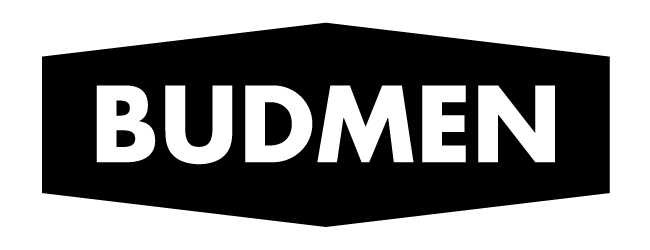Welcome to the Buildini™ Set Up Guide. If you have unboxed your Printer and are ready to start your 3D printing adventure, then you have come to the right place.
Follow the steps below to 3D print your first object on your Budmen Buildini™. If have questions please contact our support team.
Step 1:
PLACE ON SECURE SURFACE
In a dry environment, place the Printer on a secure surface, where it cannot fall or tip over. Make sure the Printer is a minimum distance of two feet (24 inches) from other objects.
Step 2:
ATTACH SPOOL HOLDER
Inside your Robot Repair Bag, you will find the spool holder attachment and two M3 x 12mm screws.

Securely fasten the attachment to the back of the Printer using the two screws provided and your T10 Allen Key.

Insert the spool holder arm fully into the attachment.
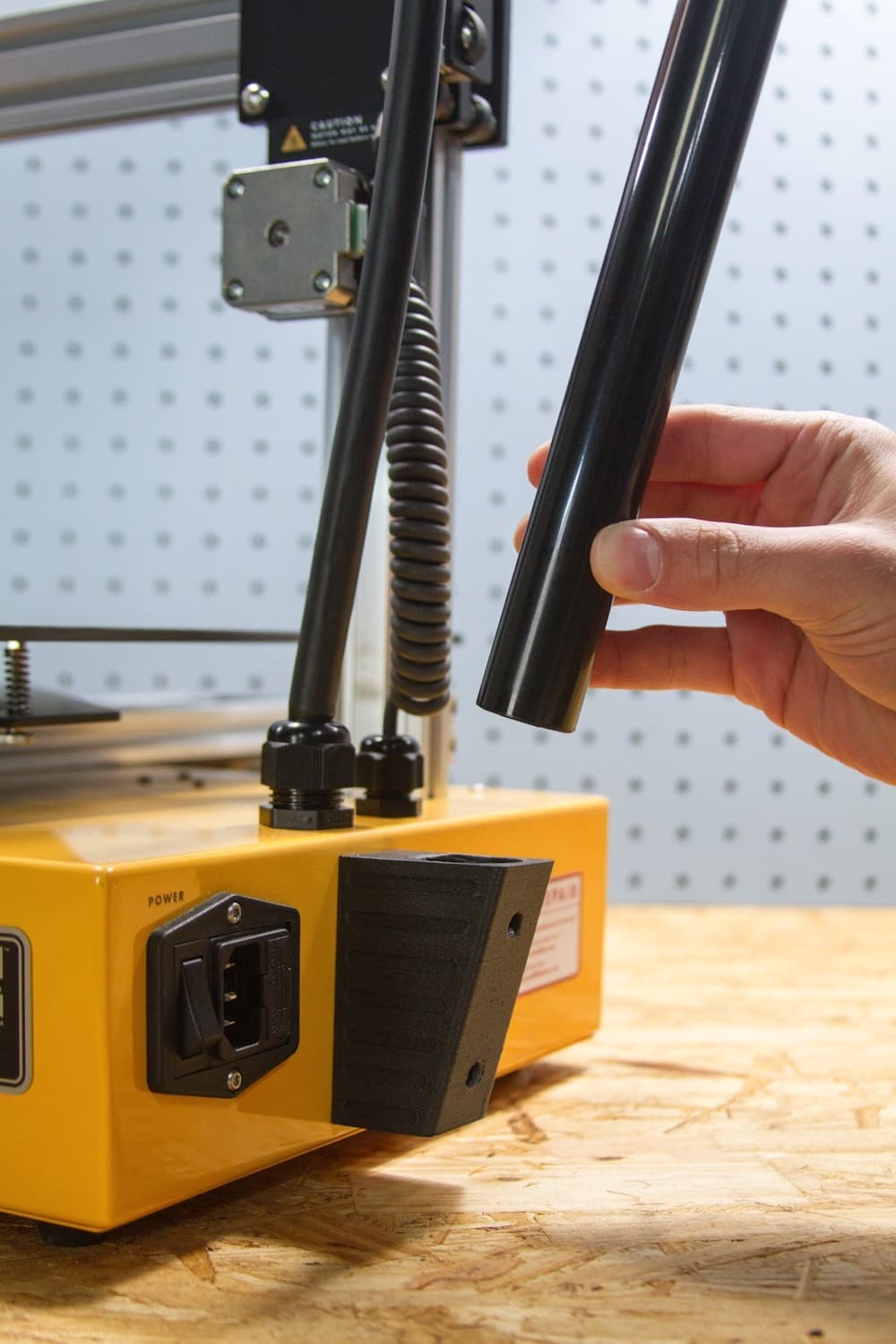
The top of the spool holder arm should be parallel with the back edge of the Printer and facing away from the Z axis, as shown in the image below.
Place the provided filament on the spool holder arm. The filament should be oriented so that the loose end comes over the top of the spool and faces the front of the machine.

Step 3:
PLUG IN 3D PRINTER
The power inlet on the Buildini™ is located on the back, next to the spool holder attachment. Set the power switch on the Buildini™ to the off position as shown in the image below. Plug the provided power cord into the Printer.
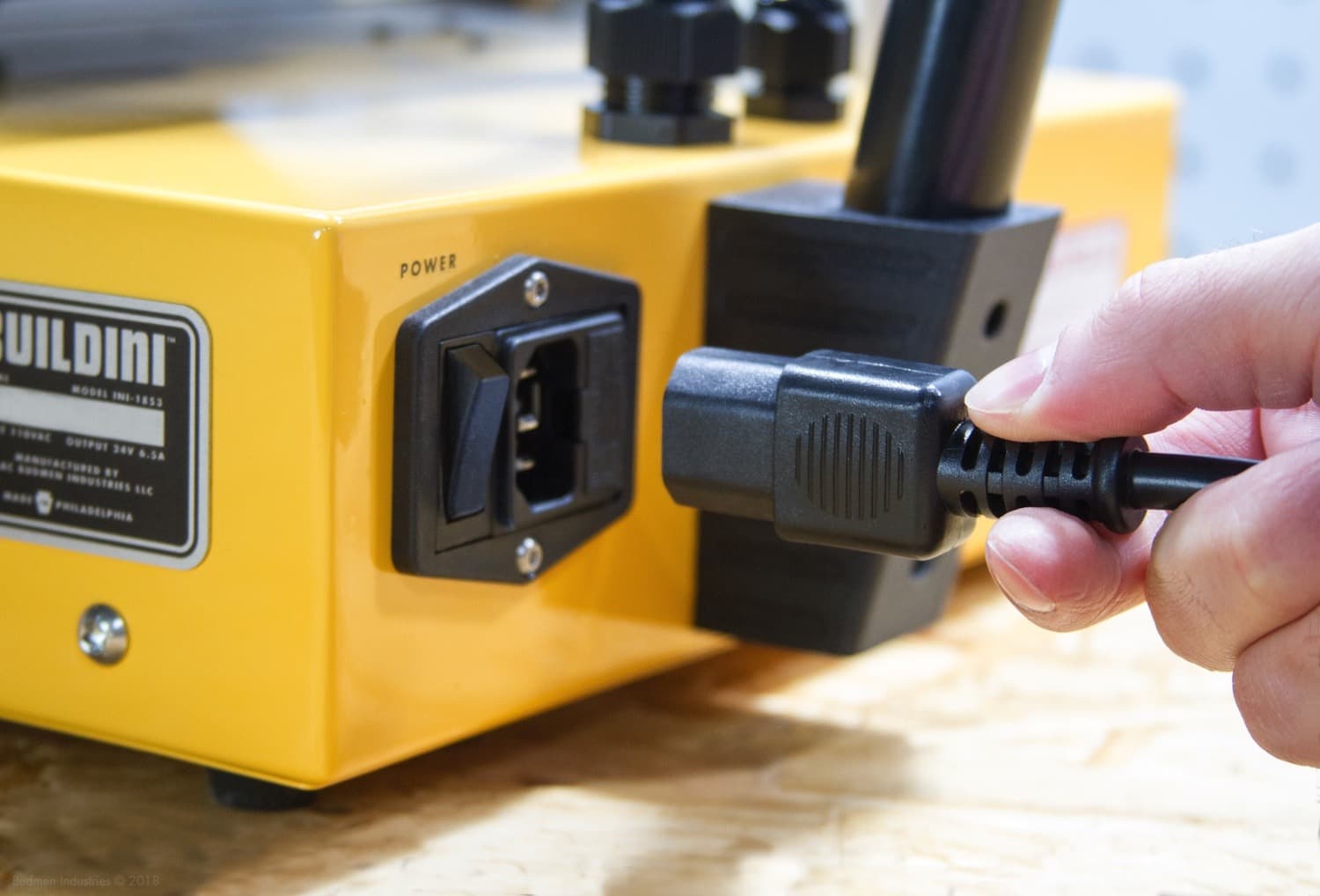
After inserting the plug into the 3D Printer, take the other end and plug it in to a close wall outlet. If the cord length is insufficient, use an extension cord. Be sure the extension cord is rated for the Printer’s power requirements. Click the power switch to turn on the 3D Printer.
Step 4:
LEVEL THE BUILD PLATFORM
The LCD screen, located on the front of the Buildini™ will illuminate when the Printer is on. Click the Spin-N-Select Knob next to the LCD Screen to open the Main Menu. Spin the knob to navigate to Prepare and click to select. From the Prepare menu, navigate to Auto Home and click the knob again. The machine will now “home.” This means it will go to the origin of the build platform: the front left corner. This is the spot where all of the Buildini™ 3D prints will begin.
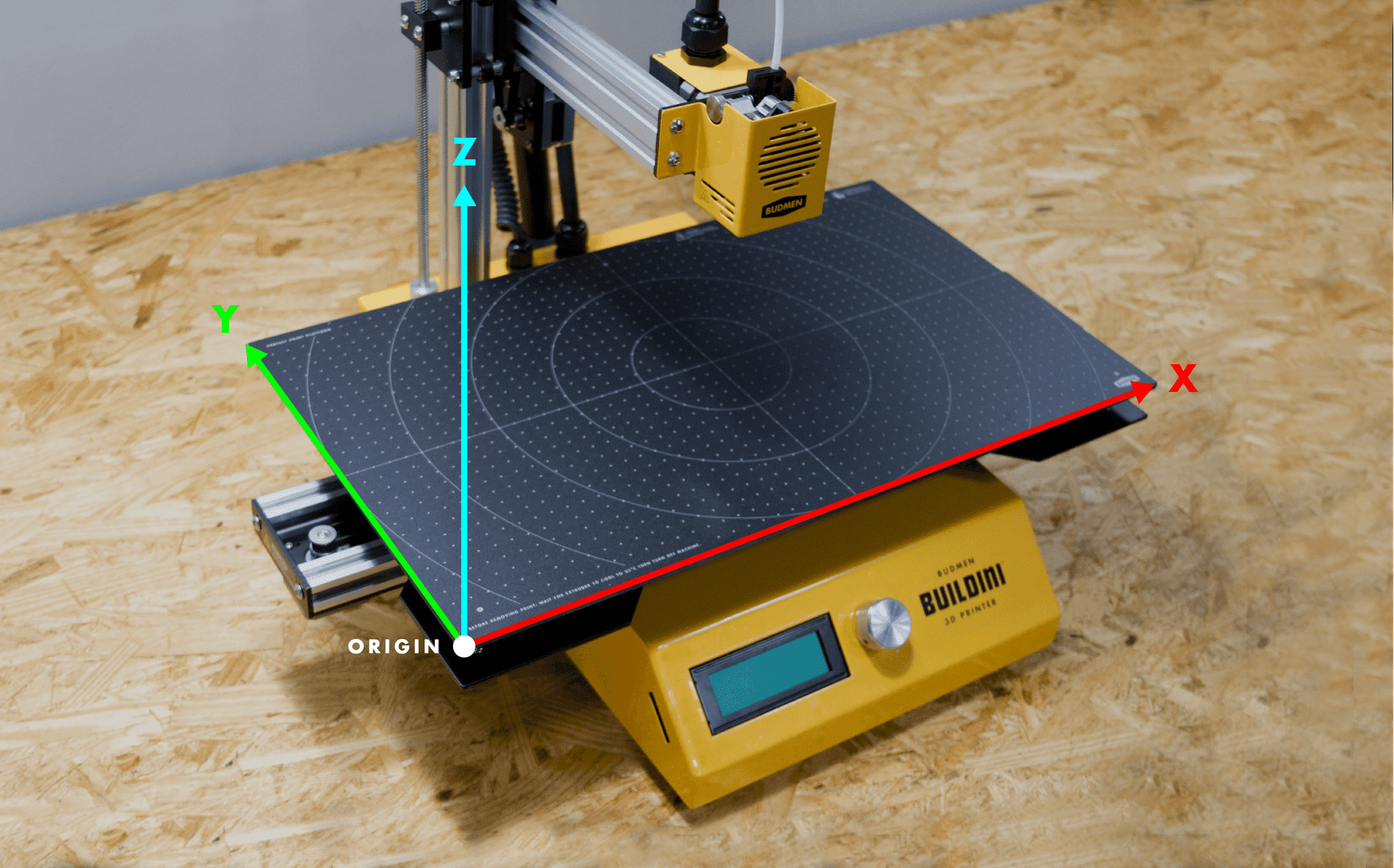
Keep clear during the homing process. If something interferes with the Printer’s path during homing, the Printer will stop short of the origin and register the incorrect point where the interference occurred as home.
On the build platform, there are three leveling points, each with a leveling knob underneath. Each leveling point is indicated by a small white circle with a black cross. The build platform will raise or lower by adjusting the leveling knob.

Return to the Prepare menu on the LCD screen and select Disable Motors. This will allow you to move the axes by hand. By moving both the extruder and the build platform, position the nozzle over one of the leveling points.
Place the provided leveling card between the leveling point and the nozzle.

As you move the leveling card back and forth, there should be a slight friction between the card and the nozzle. Tighten or loosen the leveling knob to achieve this friction. Manually move the build platform and the extruder horizontally to the next leveling point. Repeat this process for the remaining two leveling points. Recheck the first point as it might need re-adjusting. Check that all three points are level. This leveling process may take a few minutes to get a level build platform.
Tightening the knobs (turning clockwise) moves the build platform away from the nozzle. While loosening the knobs (turning counter clockwise) moves the build platform close to the nozzle.
Step 5:
MESH LEVELING
Leveling the build platform with the three leveling screws is a good start for getting a flat print surface, however, the Mesh Leveling feature takes it a step further to ensure a superior first layer.
Mesh Leveling compensates for any minor curves or tilts in the build platform by creating a digital mesh used as a reference during printing.
The Buildini™ will probe nine spots on the build platform, creating a grid. If one spot is slightly higher or lower than the others, it will raise or lower the nozzle while printing to compensate for the difference.

Make sure the nozzle is clean and free of plastic. From the Main Menu on the LCD screen, navigate to Prepare and click the Spin-N-Select Knob, then select Bed Leveling.
Finally select Level Bed. The Printer will now home. After homing it will move to the first probe point.
When the nozzle moves to the first probe point, place the provided leveling card between the leveling point and the nozzle.
As you move the leveling card back and forth, there should be a slight friction between the card and the nozzle. Turn the Spin-N-Select Knob to move the nozzle up or down. When there is a slight friction on the card, click the knob to set the height.
Repeat the probing process for the remaining 8 probe points.
When finished, choose Store Settings and the Printer will now compensate for any variations in the build platform.
Step 6:
LOAD FILAMENT
By turning the DownUp Dial at the top of the 3D Printer, raise the extruder at least one inch (1 in) above from the build platform. This is to prevent any heat damage from the nozzle to the build platform.
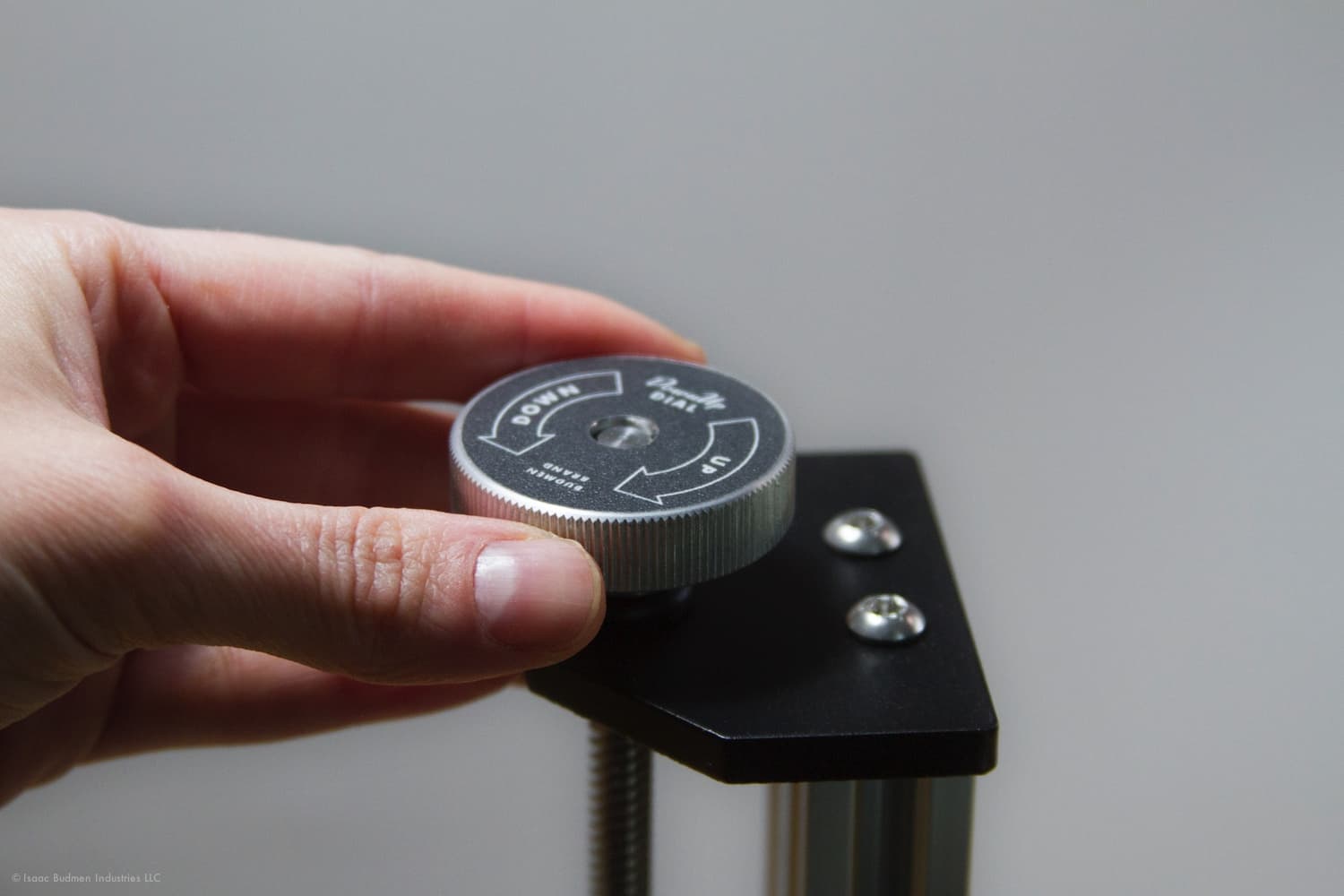
From the Main Menu on the LCD screen, navigate to Control and click the Spin-N-Select Knob to select.
From the Control menu navigate to Temperature and select.
Set the temperature to 220°C then click to select. This is the print temperature for the PLA filament that came with your Buildini™.
After the Printer reaches the temperature, thread the filament down the white Teflon guide tube until the filament shows through the other end.
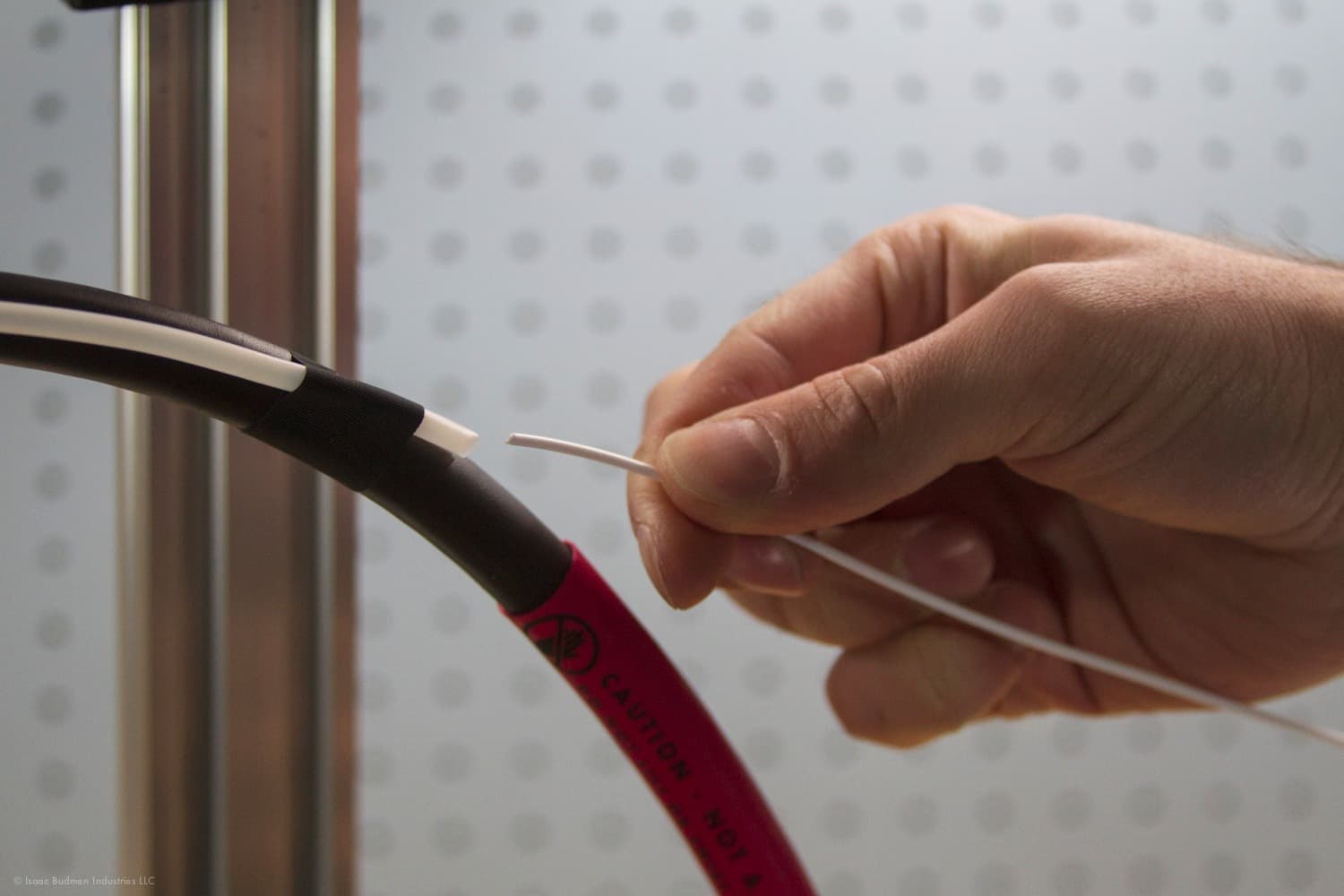
Pinch the load lever located at the top of the extruder in the direction of the small arrow, and simultaneously with your other hand, insert the tip of the filament into the Printer.

Continue inserting the filament into the Printer until plastic extrudes from the nozzle. With the snippers from the Robot Repair Bag, cut a clean edge of the filament. Never put your fingers on or near the nozzle, as an injury may occur.
Step 7:
PRINT TEST OBJECT
The SD card from your Robot Repair Bag includes a pre-loaded file for printing a test object. Insert it into the SD slot located on the front left of the Printer.
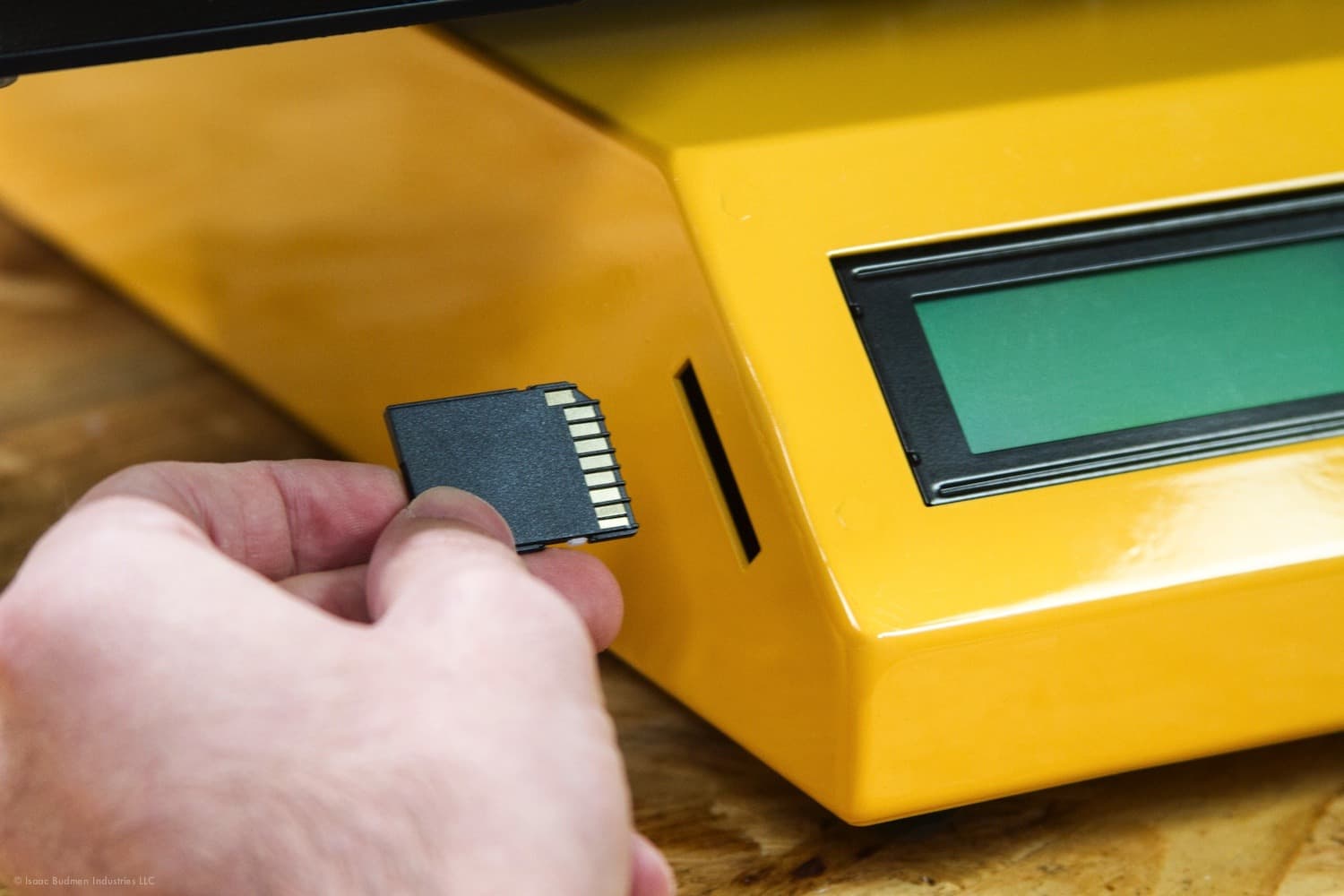
From the Main Menu on the LCD Screen navigate to the Print from SD and click to select.
Choose TEST-PRINT.G-CODE and click.
Your Buildini™ will now start the print job. First it will home all axes. Then it will heat up to the temperature set in the print job. Then the Budmen Buildini™ will begin printing.
Step 8:
WATCH FIRST LAYER
One of the trickiest parts of 3D printing is leveling the build platform. The first layer of an object needs a level platform to properly adhere to the print surface. If it is not level, the plastic will not stick correctly. Always watch the first layer of every print to see if the filament is adhering correctly.
Refer to the first image on the right as an example of an even first layer.
If your first layer looks like either of the bottom two images, the build platform is too close or too far away from the nozzle.*
Stop the print: Click the Spin-N-Select Knob to open the Active Print Menu. Scroll down and select Stop Print.
Turn the DownUp Dial to lift the nozzle so it does not touch or melt the build platform.
Wait for the nozzle to cool, clear any plastic from the surface, and re-level the build platform. Start print again. Repeat process until you achieve an even first layer.
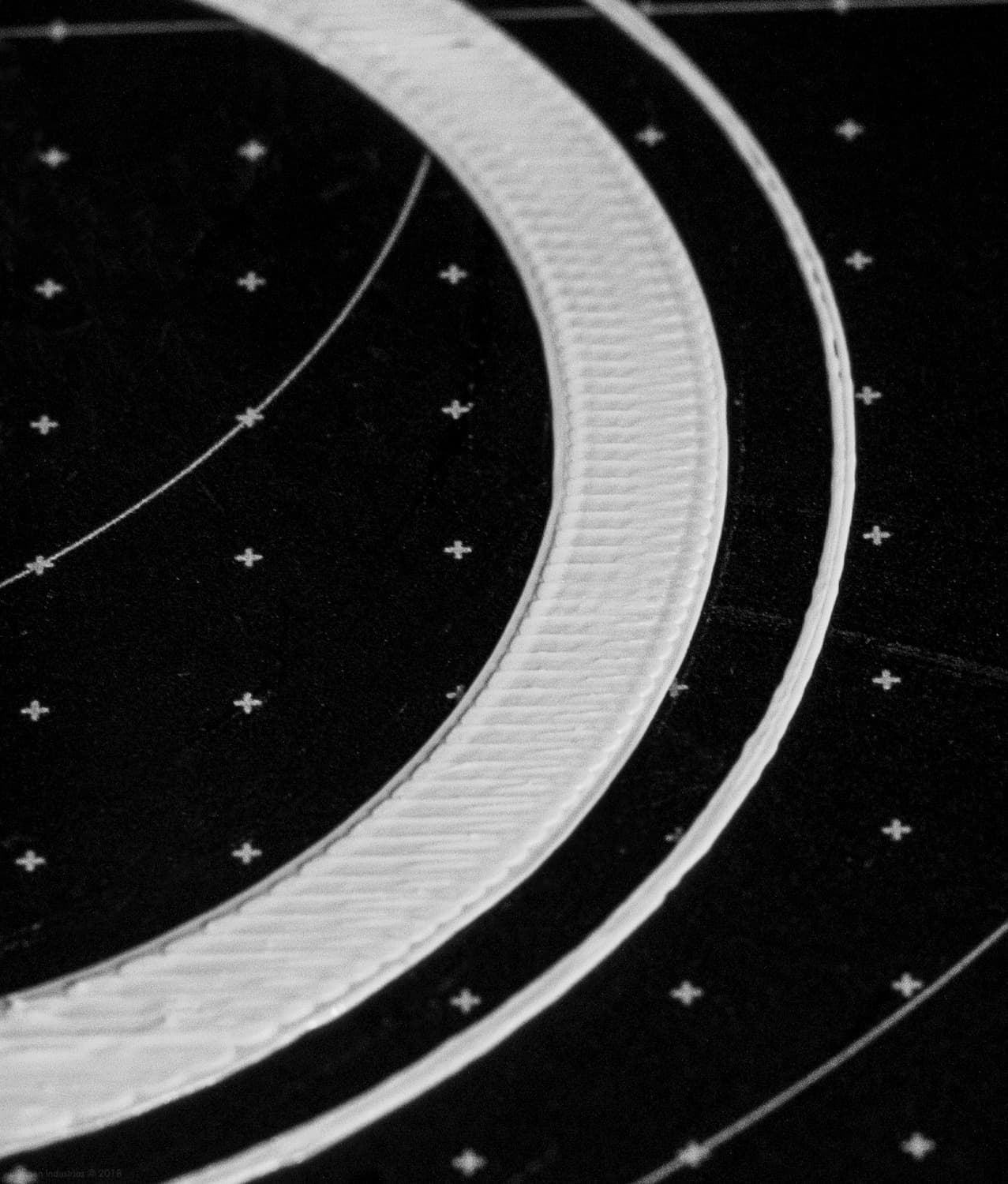
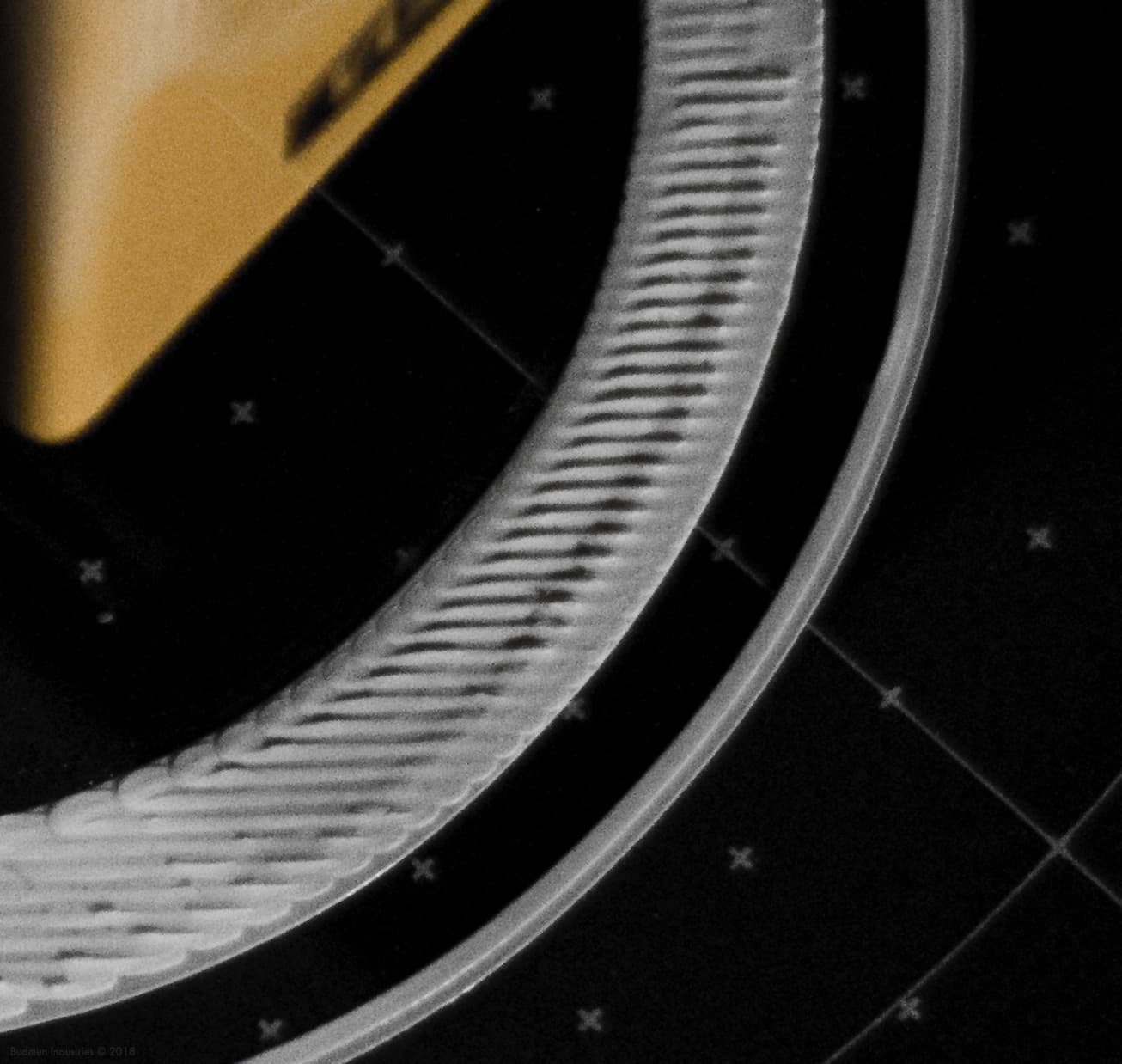

*Refer to User Guide D: Build Platform Leveling for more information
Step 9:
REMOVE OBJECT FROM BUILD PLATFORM
When your object is finished printing, the Printer will stop moving and begin cooling down. The fans will turn off when the nozzle is at room temperature.
Before removing your print, wait for the extruder to cool to 35°C then turn off your Printer. Now remove your finished object.
Take the Print Removal Spatula from your Robot Repair Bag and with your non-dominant hand, hold the build platform on the side to prevent it from moving back and forth. With your dominant hand take the spatula and gently pry up one edge of the print.

With the spatula, slowly work your way underneath the object until it comes free from the build platform.
Enjoy your first Buildini™ 3D print!
[sc name="Learn Share"]
